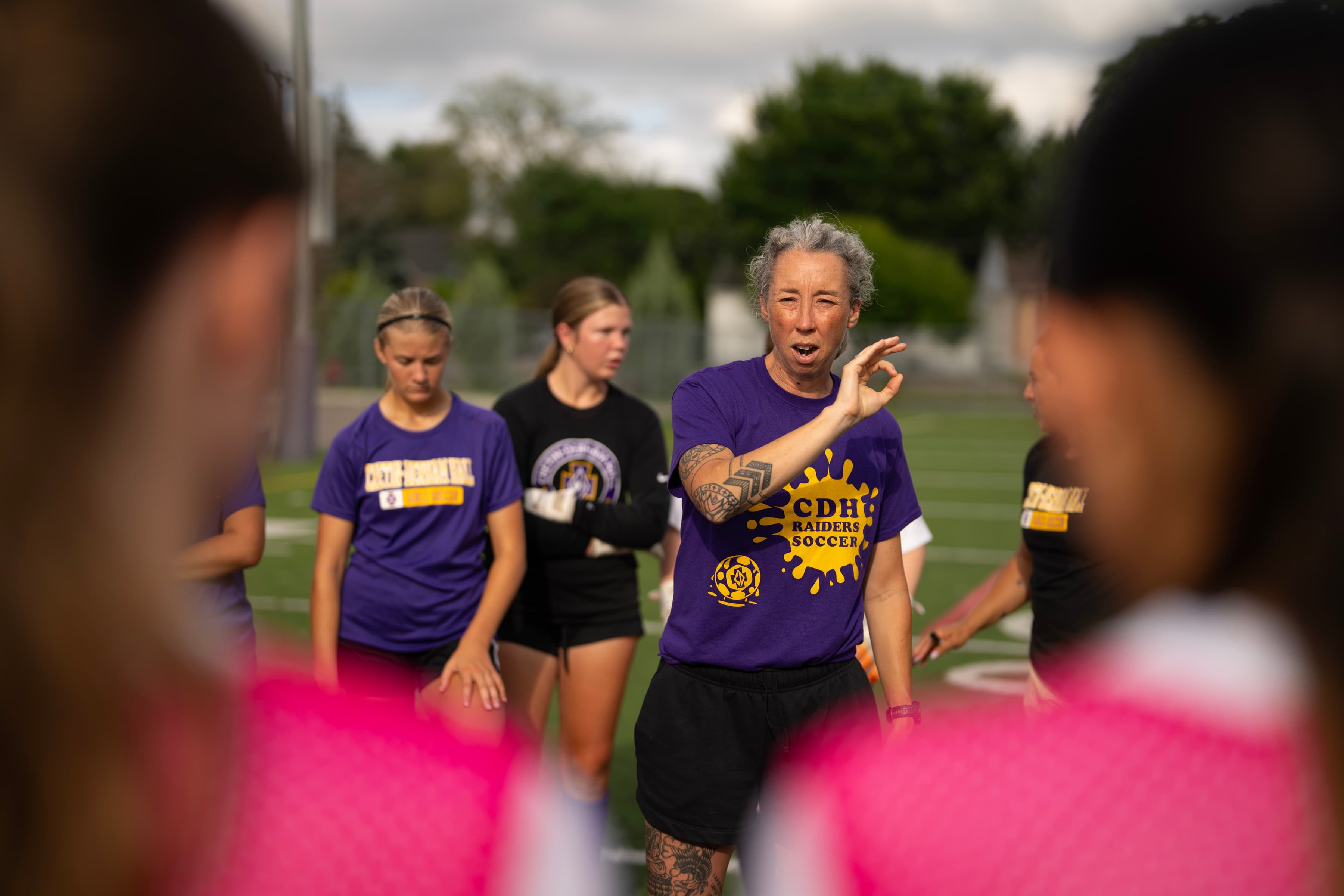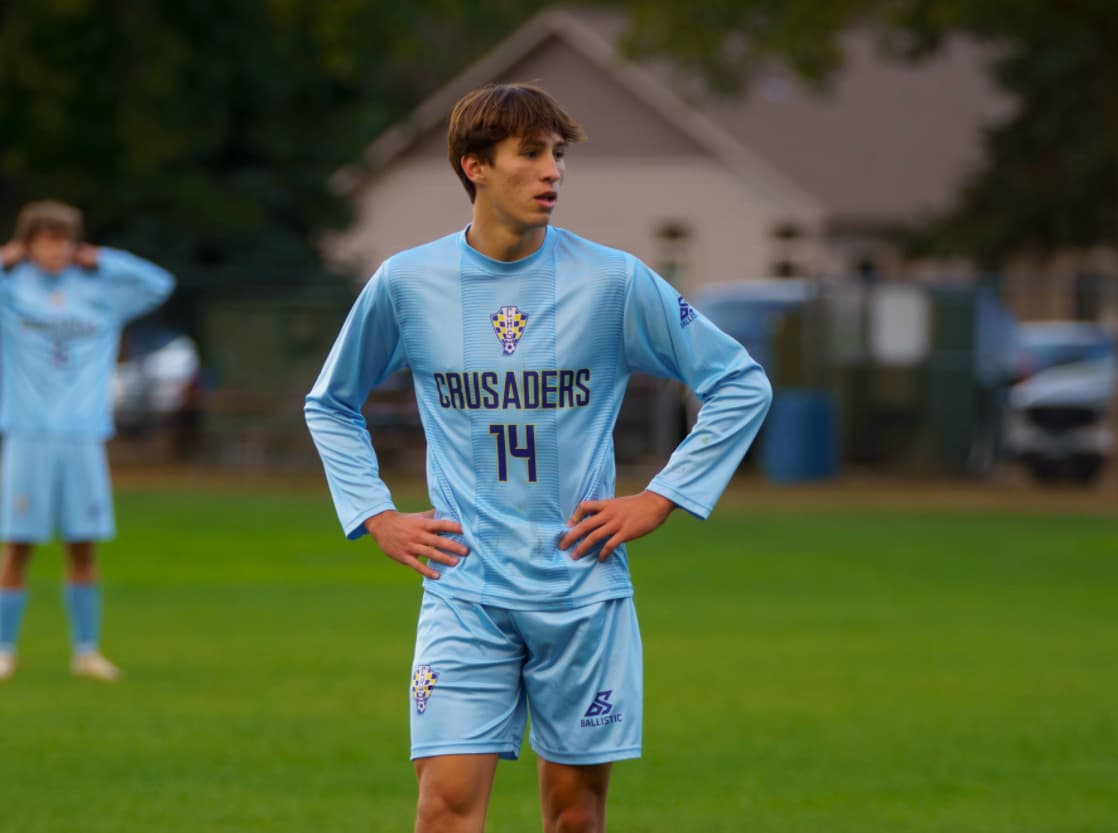After cancer, Minneapolis Southwest soccer player Tommy Schweinitz finds a new goal in top-level amputee soccer
Strib VarsityThe senior has balanced recovery, managing the Lakers team and traveling the country for competition among players in similar circumstances.

The Minnesota Star Tribune
When 17-year-old Tommy Schweinitz learned last October that the knee pain he initially chalked up to soccer soreness was actually Ewing sarcoma, a rare form of bone cancer, the Minneapolis Southwest senior knew his life would change.
As Schweinitz‘s chemotherapy began, he and his parents braced themselves for a daunting decision.
They could elect to amputate his right leg or replace his impacted bones with delicate internal prosthetics. A limb-sparing surgery was like a “mega knee replacement,” said his mother, Liz Giel. The procedure would save his leg but limit his ability to run, jump and play contact sports.
Schweinitz didn’t think there was a world in which he would never set foot on the soccer field again.
Mayo Clinic surgeons said that “if you’re a really athletic person, you might want to seriously think about an amputation,” Giel said. The family heard from others who had dealt with lower limb loss and were now skiing, rock climbing and cycling.
The thought of playing soccer again, and word that the tumor might be spreading into his ligament, led Schweinitz to sit down with his parents and pick the safest option.
On Jan. 30, Schweinitz underwent an above-knee amputation of his right leg.
Since then, Schweinitz has embedded himself into the world of amputee soccer. Later this month, Schweinitz will fly to Boston to compete in the 2025 U.S. Amputee Soccer Cup, which will bring together teams of teenagers and adults from across the country, some who have been playing adaptive soccer for almost as long as Schweinitz has been alive.
“It’s amazing, just seeing what the players can do,” Schweinitz said. “Honestly, I like to say, it’s more impressive than what [Major League Soccer] guys do, because they work their legs out — we work everything else out.”
It’s ‘Schwein Time’
Related Coverage
Ewing sarcoma impacts the bones and soft tissue of up to 250 U.S. children and young adults each year, according to the American Cancer Society. Doctors found Schweinitz’s tumor in his right femur, though there was no family history of the disease.
“It’s less than one-in-a-million chance that anybody would ever get this. So it’s just truly horrible luck,” Giel said. “We like to joke that he should buy lottery tickets.”
As Schweinitz moved in and out of the hospital every other week for 14 rounds of chemotherapy, he completed classwork through a homebound program but was able to visit Southwest for social activities, including soccer, a means to maintain some normalcy.
The Lakers junior varsity boys soccer team recognized their left winger with warm-up T-shirts that read “Schwein Time.” When Schweinitz was with the team at practices, matches and pregame dinners, he readily adopted a “mentor, manager, player-coach role,” said Southwest head coach Sean Keir.
“We really tried to make sure that, throughout that whole process, he knew that he was still a part of what we had going on,” Keir said.
In the spring, Schweinitz tracked down Keir at Southwest and asked to manage the Lakers team the following fall. To the coaches, it was a no-brainer to have the student-athlete who won last year’s most dedicated player award back with the program.
“We’re a young, talented team, and that’s going to be really fun,” Keir said.
The program graduated a staggering 19 seniors last year. “Having Tommy be there is so good for the younger players,” Keir said.
At a rainy September practice at Southwest’s stadium, Schweinitz dropped his bag off in the Lakers’ makeshift locker room — an old storage building converted into a cozy soccer space — before warming up with a few sprints.
When a teammate would rip a shot wide of the net, Schweinitz would pass a new ball, then spend a few moments dribbling and juggling, fine-tuning his own touch.
“I’m there for them,” Schweinitz said, “just nothing but support.”
Keir said he and Schweinitz had been talking through new shooting techniques now that he’s without a plant foot to shift his weight onto. He could prioritize his shots’ placement and quickness over sheer power, mimicking some of the movements of players like Lionel Messi — not a bad role model to take after.
A new style of soccer
It took Schweinitz six weeks post-surgery to walk with his prosthetic lower leg, dutifully completing his physical therapy. While staying at a local Ronald McDonald House, a temporary home for families with hospitalized children, Schweinitz began kicking the soccer ball around while using his waist-height hand crutches.
He couldn’t stay away from the game for long.
“I don’t really look at what’s hard,” he said. “I just look at it as an opportunity. Everybody asks me, ‘What’s hard about [the adjustment]?’ and I’m like, nothing.”
Eventually, Schweinitz started sharing videos of himself dribbling and passing online. He caught the attention of several adaptive soccer organizations, and they messaged Schweinitz asking if he would consider playing on a team.
“It’s a small recruitment pool, we like to joke,” his mother said with a laugh, “but that was very exciting for him.”
The outreach launched Schweinitz into the world of amputee soccer. There’s the American Amputee Soccer Association, with regional teams scattered throughout the country, and the U.S. Amputee Football Federation’s national programs. In late July, Schweinitz trained alongside several national team players at a clinic in Chicago put on by the United Adaptive Soccer Association.
At September’s U.S. Amputee Soccer Cup in Weymouth, Mass., Schweinitz will play for Arena FC, a team based in Delaware. They will face other squads sponsored by MLS teams in New England, New York, Miami, Colorado, Columbus and Chicago, some of which include players who also represent the U.S. in international tournaments.
“It’s an incredible group of people,” he said. “The least toxic sport out there. Getting to play with all these new people and being a part of this new community is really awesome.”
Advocating for amputee soccer
Schweinitz hopes that one day he won’t have to join a team from another state in order to play in major tournaments. He wants to help develop more local options for amputee soccer players. That work includes pushing Minnesota United to join some of its MLS peers and sponsor a team, a possibility given his new relationship with the pro club.
As part of Schweinitz’s Make-A-Wish experience, Minnesota United connected with the Schweinitz family, who were season-ticket holders. Leading up to the Loons’ home match against Colorado on Aug. 10, Schweinitz trained with the team in Blaine, participated in media day photos and ate lunch with now-departed striker Tani Oluwaseyi and goalkeeper Dayne St. Clair.
It was cool, said Schweinitz, “just getting to speak to them like we’re friends … ask[ing] some of my heroes questions.”
Come gameday, Schweinitz took the ceremonial opening kickoff before dribbling down St. Paul’s Allianz Field and scoring a goal. He ran to the corner flag, threw down his sports crutches and celebrated with the Loons players, pumping up the crowd and pointing to an imaginary wristwatch on his arm, indicating it was “Schwein Time.”
“Regardless of everything he’s been through, he still has a light in him. He’s still very happy. He’s a very happy kid,” said Oluwaseyi, now playing in Spain. “He has his whole future ahead of him. … I hope it was everything he dreamed.”
At the end of the match against Colorado, Schweinitz soaked in a quieter moment, once all the fans had left and the sun had set. He walked back out to midfield and sat on the grass, gazing up at the video board where his starting lineup graphic flashed up one more time.
“He had big dreams about where [soccer] was going to take him, and then this all happened, and life changed,” Giel said. “If you would have told us that we’d be here right now, we probably wouldn’t have believed you.”
Tommy still has big dreams about soccer. They’re just slightly different now.
“We are going to start working on it,” he said. “Lots of MLS teams have [amputee teams], and knowing how great [the Loons] are, they would easily start trying to make it happen.”
When Schweinitz heads to college, he hopes there’s a nearby amputee soccer program that he can compete with regularly while majoring in psychology, eventually becoming a therapist.
“I’ve always been very wise,” he said.
To Schweinitz, the work’s not done. It’s just started. Keir and Giel have both heard Schweinitz cooking up plans for something much bigger than himself.
“I’ve been around high school kids for a long time,” Keir said. “That’s a very special thing.”
About the Author
Cassidy Hettesheimer
Sports reporter
Cassidy Hettesheimer is a high school sports reporter at the Minnesota Star Tribune.
See More


Comments